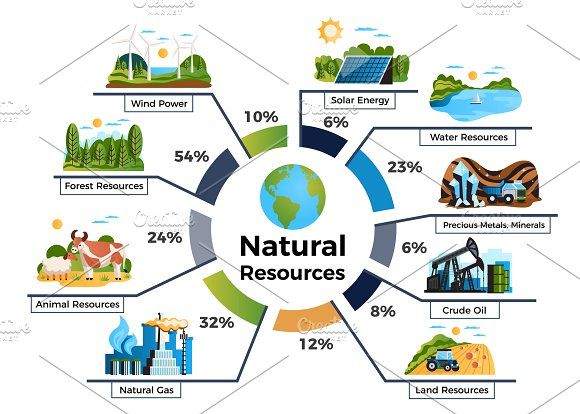PHYTOREMEDIATION
Due to ignorance, poor vision, or carelessness, industrial, military, and agricultural activities all over the world contaminate tracts of land, surface waters, and groundwater.
Due to ignorance, poor vision, or carelessness, industrial, military, and agricultural activities all over the world contaminate tracts of land, surface waters, and groundwater. the accumulation of harmful contaminants. In addition to having an impact on natural resources, (metals, radionuclides, and organic pollutants in soil, surface water, and ground water) also place a significant pressure on ecosystems. In order to cope with the environmental contaminants that have accumulated through time, plants have developed a wide variety of genetic adaptations. Metals, pesticides, solvents, explosives, crude oil, poly-aromatic hydrocarbons, and landfill leachates can all be removed from the environment via phytoremediation. “Effective use of plants to eliminate, detoxify, or immobilise (fix) the environmental pollutants in a growth matrix (soil, water, or sediments) through the natural biological activities and plant processes” is the definition of phytoremediation.Plants are unusual organisms with extraordinary sorption and metabolic capacities. In addition, the plants have effective transport systems that can selectively absorb nutrients or pollutants from the soil, water, or growth matrix.Thus Phytoremediation is a cheap, solar-powered cleanup method (photo-sequestration). Sites with minimal pollution levels benefit from it the most. It can be used to remediate a variety of environmental pollutants.Plants can be utilized in a variety of ways to clean up or remediate contaminated environments. Plants have the ability to break down or degrade organic pollutants, stabilize metal contaminants by functioning as filters or traps, and remove pollutants from soil, sediment, and/or water.The primary route through which pollutants are absorbed by plants—and where toxicity avoidance systems are present—is through the root system. The root system offers a substantial surface area that collects and accumulates the nutrients and water required for growth, as well as other non-essential pollutants.
Because tree roots can reach deeper into the soil than those of smaller plants, using trees to cure deeper soil contamination is more successful.
In addition, it is possible to clean up the contamination in deep-lying contaminated ground water by pumping the water out of the earth and utilising particular plants.
By releasing inorganic and organic substances (called “root exudates”) into the rhizosphere (the region between the soil and the roots), plant roots also affect the rhizosphere.Root exudates alone have the potential to boost directly or indirectly reduce (immobilise) or (mobilise) the availability of the pollutants that enter the plant’s rhizosphere (root zone) through: Changes to the physical properties of soil, Changes to the soil’s chemical makeup 3. Release of organic compounds, An increase in the microbial activity aided by plants.
Phytoremediation is a substitute for, or complementary to, mechanical traditional clean-up procedures, which frequently demand significant capital investments, extensive labour inputs, and high energy requirements. A technique for in-situ cleanup called phytoremediation makes use of the natural skills of live plants. It is also a green technology that is based on the idea of employing plants to clean up the environment and is powered by solar energy.
There are different mechanisms involved in phytoremediation. These are phytoextraction, phytostabalization,phytodegradation, phytotransformation, phytovolatization.
some of the examples of plants used in phytoremediation
practices are the following:
- Water hyacinths (Eichornia crassipes)
- Poplar trees (Populus spp.)
- Forage kochia (Kochia spp.)
- Alfalfa (Medicago sativa)
- Kentucky bluegrass (Poa pratensis)
- Scirpus spp., coontail (Ceratophyllum demersum)
- American pondweed (Potamogeton nodosus)
- Common arrow-head (Sagittaria latifolia)
Phytoremediation is less expensive than conventional methods, both in situ and ex Situ. It is simple to keep an eye on the plants. There is a chance that valuable metals can be recovered and used again (“Phytomining”). Because it uses naturally occurring organisms and keeps the ecosystem in a more natural form, it may be the least hazardous option. It protects the topsoil, preserving the soil’s fertility. It makes it easier to employ plants to prevent soil erosion and metal leaching. Phytoremediation only affects the surface area and the depth that the roots occupy. The low biomass and slow growth necessitate a long-term commitment. It is impossible to totally stop the leaching of pollutants into the groundwater with plant-based remediation systems. The toxicity of the contaminated land and the general state of the soil have an impact on the life of the plants. The bio absorption of pollutants, particularly metals, into plants, which then enter the food chain from first-level consumers upwards, or the need for the secure disposal of the contaminated plant material. When plants absorb heavy metals, the metal may occasionally become bonded to the organic materials in the soil, making it impossible for the plant to extract the metal.
AIMAN SHABBIR
MPHIL BIOLOGY (PMAS-ARID AGRICULTURE UNIVERSITY RAWALPINDI)

